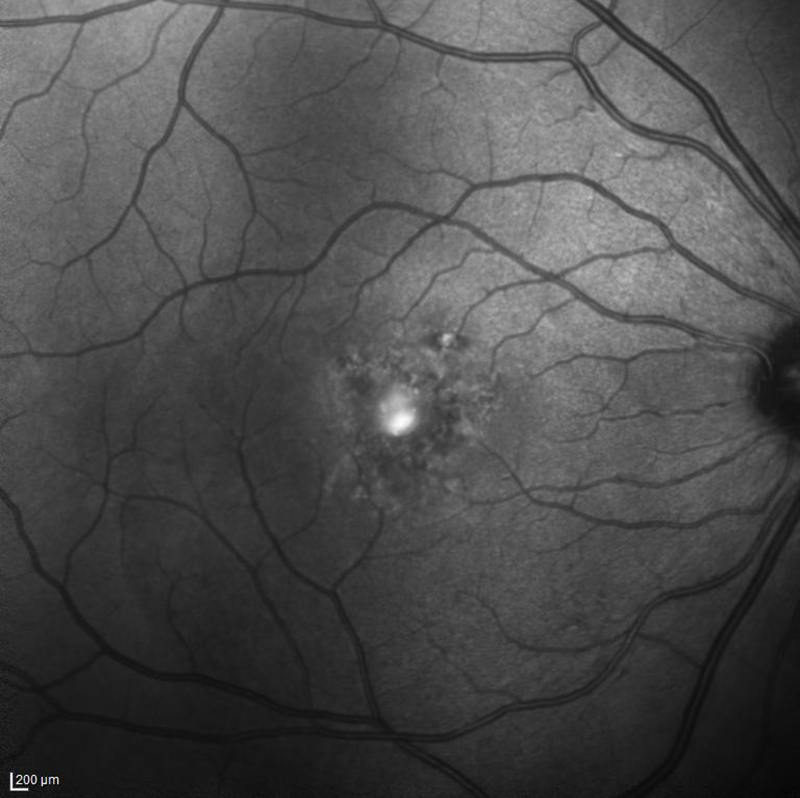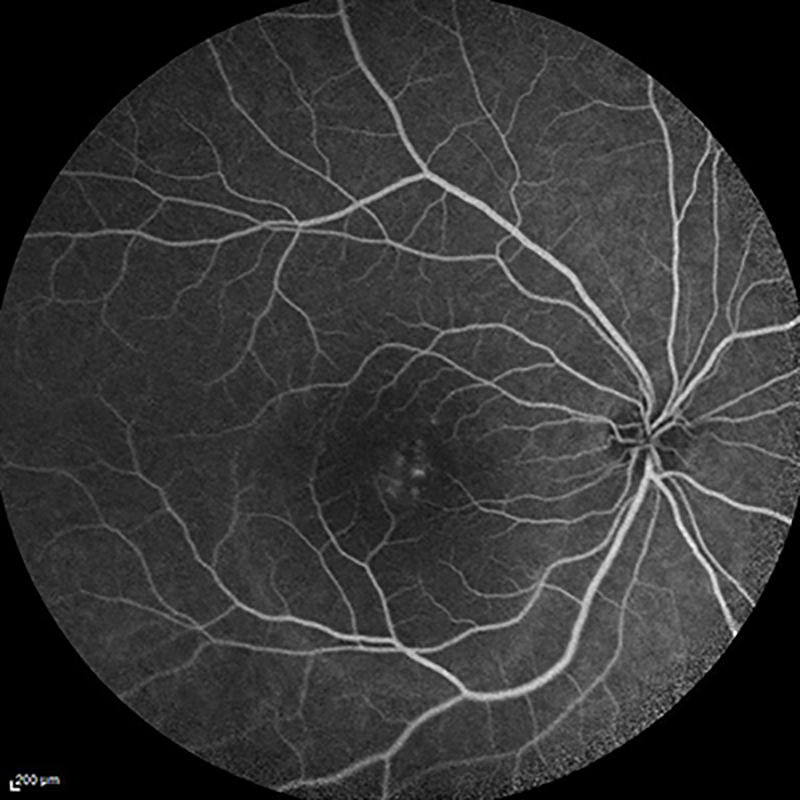Central Serous Retinopathy/Chorioretinopathy

red free fundus photo of central serous retinopathy

fluorescein angiogram of central serous retinopathy
What is Central Serous Retinopathy/Chorioretinopathy?
Central Serous Chorioretinopathy, also known as Central Serous Retinopathy (CSR), is a poorly understood condition in which a pool of fluid forms under the macula, the portion of the retina that is responsible for central vision. Currently it is thought that this condition is caused by leakage of fluid into this portion of the eye, due to very fragile blood vessels.
Who is at risk for CSR?
While CSR can occur in nearly anyone, men in their 30s-50s are most commonly affected by this condition. Stress can be a major contributor to the formation of Central Serous Retinopathy as well. Additional risk factors can include:
- Use of cortisone type medications (oral, inhaled, injected or even topical)
- Suffering a bacterial infection with Helicobacter Pylori (this typically infects the stomach).
- Autoimmune diseases (diseases in which the body attacks itself, for example, lupus)
- Poor sleep habits
- High blood pressure
- Smoking
- Type A behavior (aggressive and competitive behavior)
What are the symptoms of CSR?
Typically, patients with CSR complain of blurry, dim or distorted vision. Sometimes, lines can look wavy, bent or irregular. Some patients complain of objects appearing smaller or further away than they truly are. Additionally, objects may appear to have a brown or gray tint, and dark areas may appear in your central vision.
How do you diagnose and treat CSR?
Diagnosis involves dilation of the eyes and utilizing specialized testing methods, such as an OCT (Optical Coherence Tomography), fluorescein angiography (FA), and/or indocyanine green angiography (ICG). Often treatment is not necessary, as CSR typically resolves on its own over several weeks to several months. If symptoms do not clear up, or if symptoms are severe, different types of laser therapies are available to help “seal” the area of fluid leakage. It is recommended that patients with CSR minimize the use of steroids, stop smoking, and address any of the factors listed above that may increase the risk of developing this condition. CSR can reoccur and lead to repeated build-up of fluid under the retina; therefore, it is important to follow up with your retina specialist regularly. Most people will maintain relatively good central vision, but some patients may suffer significant visual loss over time.